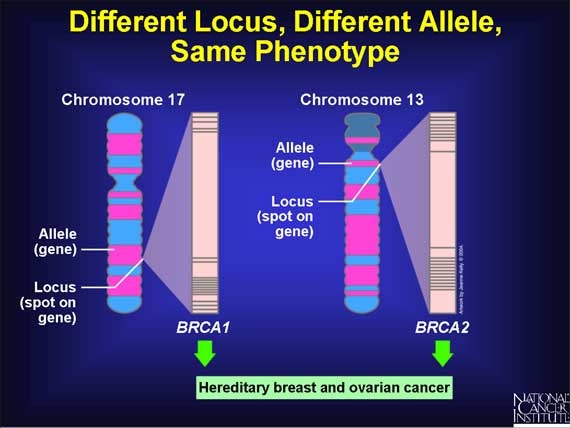|
Many cancer susceptibility syndromes are genetically heterogeneous (a mixture), which means that different mutations (genotypes) can be expressed as the same phenotype (e.g., cancer). These different mutations may be located within the same gene but at different locations (locus heterogeneity) or on different genes altogether (allelic heterogeneity). For example, hereditary breast and ovarian cancer susceptibility has both locus and allelic heterogeneity. More than 500 different mutations have been identified that can occur in the BRCA1 gene on chromosome 17 and increase a woman's risk for breast cancer. And more than 300 mutations scattered throughout the BRCA2 gene on chromosome 13 are associated with hereditary breast and ovarian cancer susceptibility.

< Previous | Index | Next Slide > |